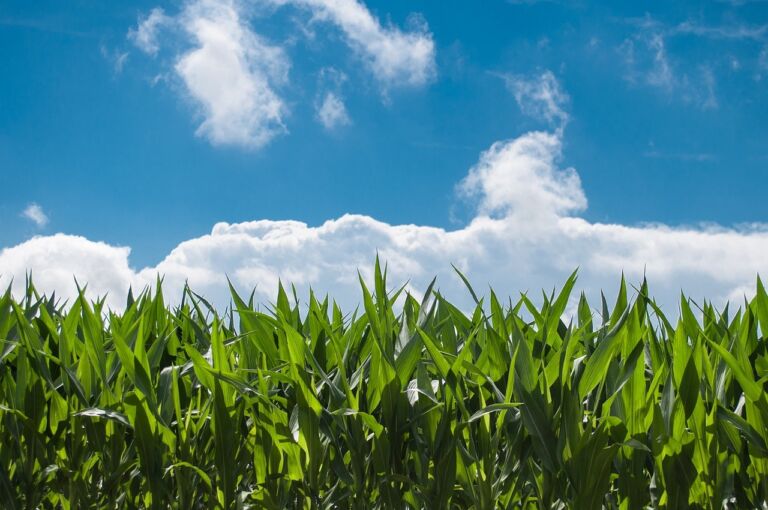Experts weigh in Chinese ownership of Ag land
Experts weigh in Chinese ownership of Ag land Carolina Journal



Foreign Holdings of US Agricultural Land and the Sustainable Development Goals (SDGs)
Last week, the NC Chamber hosted “Imagine Ag Day,” a conference that focused on addressing issues facing the agricultural industry. One of the key topics discussed was the increasing trend of foreign holdings of US agricultural land. According to recent data, over 700,000 acres of farmland in North Carolina are foreign-owned, reflecting an 8% increase in foreign holdings nationwide in 2022.
The Complexity of Foreign Ownership
Randy Russell, an agriculture lobbyist and president of The Russell Group, highlighted the complexity of this issue during a bipartisan committee meeting held by the House Committee on Agriculture. He emphasized that China, as the largest export customer of US agriculture products, plays a significant role in this matter. With China owning approximately 350,000 acres of farmland in the US, Russell argued that reciprocity should be a crucial consideration. He pointed out that China would never allow an American to own Chinese land, especially near sensitive American infrastructure like military installations.
National Security Concerns
Russell further emphasized the importance of considering the location of foreign-owned farmland. He referenced an incident involving the Fufeng Group, a Chinese company that purchased land near Grand Forks Air Force Base in North Dakota. The Department of the Air Force expressed concerns about the proposed construction of a corn milling processing plant near the base, stating that it presented a significant threat to national security. However, the Committee on Foreign Investment in the United States (CFIUS) concluded that it did not have jurisdiction over the matter.
The Need for Legislation
North Carolina is one of five states identified by the federal agriculture department as having worrisome rates of Chinese land ownership. Currently, four out of these five states do not have restrictions on foreign ownership. However, state lawmakers in North Carolina are keen to address this issue. Last year, the NC House passed HB463, the NC Farmland and Military Protection Act, which aims to prohibit the acquisition of agricultural and other lands critical to the safety and security of the state by certain adversarial foreign governments. Although the bill was referred to the Senate Rules Committee and did not progress further, it is eligible for consideration in the upcoming 2024 short session.
Conclusion
The issue of foreign holdings of US agricultural land, particularly by China, raises concerns about national security and reciprocity. It is essential to prioritize the Sustainable Development Goals (SDGs) when addressing this issue, particularly Goal 2: Zero Hunger and Goal 15: Life on Land. Ensuring food security and sustainable land use are crucial for the well-being of both present and future generations.
SDGs, Targets, and Indicators
-
SDG 2: Zero Hunger
- Target 2.4: By 2030, ensure sustainable food production systems and implement resilient agricultural practices that increase productivity and production, that help maintain ecosystems, that strengthen capacity for adaptation to climate change, extreme weather, drought, flooding, and other disasters, and that progressively improve land and soil quality.
- Indicator 2.4.1: Proportion of agricultural area under productive and sustainable agriculture
-
SDG 15: Life on Land
- Target 15.1: By 2020, ensure the conservation, restoration, and sustainable use of terrestrial and inland freshwater ecosystems and their services, in particular forests, wetlands, mountains, and drylands, in line with obligations under international agreements.
- Indicator 15.1.2: Proportion of important sites for terrestrial and freshwater biodiversity that are covered by protected areas, by ecosystem type
-
SDG 16: Peace, Justice, and Strong Institutions
- Target 16.6: Develop effective, accountable, and transparent institutions at all levels.
- Indicator 16.6.1: Primary government expenditures as a proportion of original approved budget, by sector (or by budget codes or similar)
| SDGs | Targets | Indicators |
|---|---|---|
| SDG 2: Zero Hunger | Target 2.4: By 2030, ensure sustainable food production systems and implement resilient agricultural practices that increase productivity and production, that help maintain ecosystems, that strengthen capacity for adaptation to climate change, extreme weather, drought, flooding, and other disasters, and that progressively improve land and soil quality. | Indicator 2.4.1: Proportion of agricultural area under productive and sustainable agriculture |
| SDG 15: Life on Land | Target 15.1: By 2020, ensure the conservation, restoration, and sustainable use of terrestrial and inland freshwater ecosystems and their services, in particular forests, wetlands, mountains, and drylands, in line with obligations under international agreements. | Indicator 15.1.2: Proportion of important sites for terrestrial and freshwater biodiversity that are covered by protected areas, by ecosystem type |
| SDG 16: Peace, Justice, and Strong Institutions | Target 16.6: Develop effective, accountable, and transparent institutions at all levels. | Indicator 16.6.1: Primary government expenditures as a proportion of original approved budget, by sector (or by budget codes or similar) |
Analysis
1. Which SDGs are addressed or connected to the issues highlighted in the article?
The issues highlighted in the article are connected to SDG 2: Zero Hunger, SDG 15: Life on Land, and SDG 16: Peace, Justice, and Strong Institutions.
2. What specific targets under those SDGs can be identified based on the article’s content?
Based on the article’s content, the specific targets that can be identified are:
– Target 2.4: By 2030, ensure sustainable food production systems and implement resilient agricultural practices that increase productivity and production, that help maintain ecosystems, that strengthen capacity for adaptation to climate change, extreme weather, drought, flooding, and other disasters, and that progressively improve land and soil quality.
– Target 15.1: By 2020, ensure the conservation, restoration, and sustainable use of terrestrial and inland freshwater ecosystems and their services, in particular forests, wetlands, mountains, and drylands, in line with obligations under international agreements.
– Target 16.6: Develop effective, accountable, and transparent institutions at all levels.
3. Are there any indicators mentioned or implied in the article that can be used to measure progress towards the identified targets?
Yes, there are indicators mentioned in the article that can be used to measure progress towards the identified targets:
– Indicator 2.4.1: Proportion of agricultural area under productive and sustainable agriculture
– Indicator 15.1.2: Proportion of important sites for terrestrial and freshwater biodiversity that are covered by protected areas, by ecosystem type
– Indicator 16.6.1: Primary government expenditures as a proportion of original approved budget, by sector (or by budget codes or similar)
These indicators can provide insights into the extent of sustainable food production systems, conservation efforts for terrestrial and freshwater ecosystems, and the development of effective institutions.
SDGs, Targets, and Indicators
| SDGs | Targets | Indicators |
|---|---|---|
| SDG 2: Zero Hunger | Target 2.4: By 2030, ensure sustainable food production systems and implement resilient agricultural practices that increase productivity and production, that help maintain ecosystems, that strengthen capacity for adaptation to climate change, extreme weather, drought, flooding, and other disasters, and that progressively improve land and soil quality. | Indicator 2.4.1: Proportion of agricultural area under productive and sustainable agriculture |
| SDG 15: Life on Land | Target 15.1: By 2020, ensure the conservation, restoration, and sustainable use of terrestrial and inland freshwater ecosystems and their services, in particular forests, wetlands, mountains, and drylands, in line with obligations under international agreements. | Indicator 15.1.2: Proportion of important sites for terrestrial and freshwater biodiversity that are covered by protected areas, by ecosystem type |
| SDG 16: Peace, Justice, and Strong Institutions | Target 16.6: Develop effective, accountable, and transparent institutions at all levels. | Indicator 16.6.1: Primary government expenditures as a proportion of original
Behold! This splendid article springs forth from the wellspring of knowledge, shaped by a wondrous proprietary AI technology that delved into a vast ocean of data, illuminating the path towards the Sustainable Development Goals. Remember that all rights are reserved by SDG Investors LLC, empowering us to champion progress together. Source: carolinajournal.com
Join us, as fellow seekers of change, on a transformative journey at https://sdgtalks.ai/welcome, where you can become a member and actively contribute to shaping a brighter future.
|








